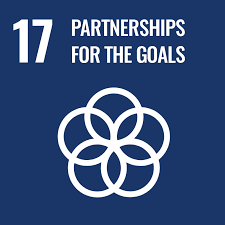-
About
ABOUTIn 2014, the Governments of the Philippines and the United States launched the MICIC Initiative to address the impact of crises conflicts and natural disasters on migrants.
MICIC
MICIC
IOM Global
IOM Global
-
Our Work
Our WorkThe International Organization for Migration (IOM) supports its counterparts and partners in the implementation of the MICIC Guidelines through a comprehensive offer of capacity building tools and services.
Capacity Building
Capacity Building
- Where We Work
- Data and Resources
- Take Action
- 2030 Agenda
When the UN General Assembly announced the 2030 Agenda for Sustainable Development in 2015, they laid the groundwork for a global commitment to tackle pressing challenges by 2030. With its 17 interconnected goals and 169 associated targets, this agenda reflects a universal ambition. One key evolution in the global discourse has been the growing recognition of the nexus between migration and development, as evidenced in key resolutions like the New York Declaration (2016) and the Global Compact for Safe, Orderly, and Regular Migration (2018).
During crisis —whether due to conflicts, natural disasters, or other emergencies—the imperative to uphold and advance the SDGs intensifies, underpinning efforts to save lives and build a response and recovery which is inclusive for all affected people. Among these groups, migrant populations are often among the most at risk of being left behind during the crisis and response. This is where the Migrant in Countries in Crisis, or MICIC, Guidelines become crucial. These guidelines co-developed by governments, global agencies, civil society, and migrants themselves, offer a roadmap for ensuring that in times of crisis, all actors, including states and civil society, address the situation with a migrant-inclusive approach. By doing so, they not only protect migrant rights but also champion the values and objectives of the SDGs, ensuring that their principles are integrated throughout every phase: before, during, and post-crisis.
Connecting the Dots: SDGs & MICIC Guidelines
While the SDGs holistically address a broad range of challenges, including poverty, hunger, health, gender equality, and partnerships, the MICIC Guidelines focus on shaping and building a migrant-inclusive response to a crisis situation. Through the implementation of the MICIC Guidelines such as:
- Guideline 3: Empower migrants to help themselves, their families, and communities during and in the aftermath of crises;
- Guideline 4: Incorporate migrants in prevention, preparedness, and emergency response systems;
- Guideline 7: Establish coordination agreements in advance to leverage strengths and foster trust;
- Guidelines 11: Provide Humanitarian Assistance without Discrimination; and
- Guideline 14: Address migrants’ immediate needs and support migrants to rebuild lives;
actors can ensure that no-one is left behind during times of crisis, while simultaneously advancing several key sustainable development goals.
|
|
Humanitarian Assistance (SDG 1 – No Poverty & SDG 2 – Zero Hunger): The MICIC Guidelines emphasize that migrants in crisis situations require access to humanitarian assistance, including food, water, shelter, and medical care. This resonates with SDG 1 and SDG 2, which strive to end poverty and hunger for all individuals. |
|
|
Health & Well-Being (SDG 3 – Good Health and Well-Being): Both frameworks champion healthcare access. MICIC amplifies the call for comprehensive health services, including mental health support, for migrants, aligning with SDG 3. |
 |
Gender Equality (SDG 5 – Gender Equality): Both the SDGs and the MICIC Guidelines recognize the importance of gender equality. Women and girls among migrants often face unique challenges, such as increased vulnerability to violence and exploitation. The MICIC Guidelines emphasize the need to address gender-specific issues during crises. |
 |
Leave No One Behind (SDG 10 – Reduced Inequalities): The core principle of SDG 10 is to "leave no one behind." This aligns with the MICIC Guidelines, which emphasize the importance of including migrants in crisis response efforts, regardless of their legal status. The Guidelines underscore the need to ensure that migrants are not disproportionately affected by crises and that their rights and dignity are respected. |
 |
Partnerships (SDG 17 – Partnerships for the Goals): Achieving the SDGs and effectively implementing the MICIC Guidelines require collaboration among governments, international organizations, civil society, and the private sector. SDG 17 highlights the significance of such collaborative efforts. |
In summary, the SDGs and the MICIC Guidelines are complementary frameworks that share common goals of ensuring the well-being, dignity, and rights of all individuals, especially migrants, even in times of crisis. By integrating the principles of the MICIC Guidelines into their crisis response strategies, countries can make significant strides towards achieving the broader aspirations of the Sustainable Development Goals.
